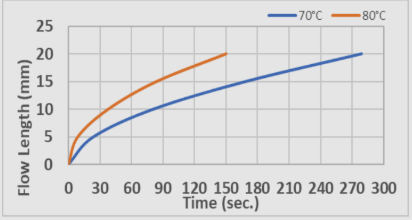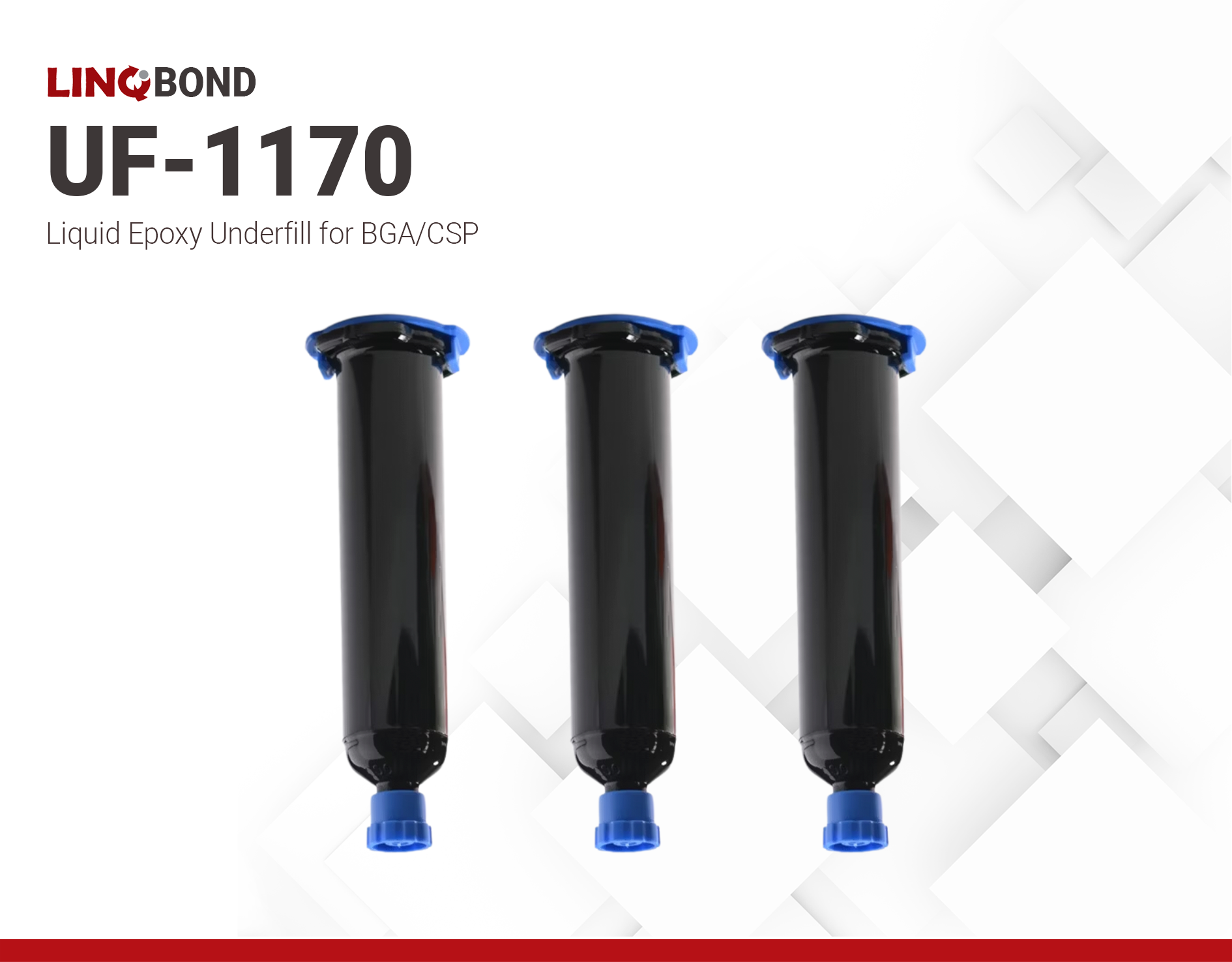LINQBOND UF-1170 | Liquid Epoxy Underfill for BGA/CSP
Harmonization Code : 3907.30.00.90 | Polyacetals, other polyethers and epoxide resins, in primary forms; polycarbonates, alkyd resins, polyallyl esters and other polyesters, in primary forms : Epoxide resins : Other
Main features
- Single component
- Excellent heat and moisture resistance
- Automotive grade
Product Description
LINQBOND UF-1170 is a one-component epoxy adhesive with exceptional heat resistance, dielectric properties, and electrical insulation, making UF1170 ideal for demanding underfill applications in semiconductor packaging, BGA/CSP solder joints, high-temperature electronic devices, automotive electronics, and 5G equipment.
LINQBOND UF-1170 offers robust protection against mechanical stress, moisture, and thermal cycling, ensuring long-term reliability and durability.
Cure Conditions
- 30 mins @150℃
Applications
- Underfill for BGA/CSP solder joints
- Semiconductor packaging and encapsulation
- Automotive electronic modules
- High-performance electronics and 5G equipment
- Assemblies exposed to high temperature or thermal cycling
Technical Specifications
| General Properties | |||||||
| Appearance Appearance Appearance at room temperature. | Liquid | ||||||
| Color Color The color | Black | ||||||
| Physical Properties | |||||||
| Thixotropic index Thixotropic index Thixotropic Index is a ratio of a material s viscosity at two different speeds in Ambient temperature, generally different by a factor of ten. A thixotropic material s viscosity will decrease as agitation or pressure is increased. It indicates the capability of a material to hold its shape. Mayonnaise is a great example of this. It holds its shape very well, but when a shear stress is applied, the material easily spreads. It helps in choosing a material in accordance to the application, dispense method and viscosity of a material. | 0.7 | ||||||
| Viscosity Viscosity Viscosity is a measurement of a fluid’s resistance to flow. Viscosity is commonly measured in centiPoise (cP). One cP is defined as the viscosity of water and all other viscosities are derived from this base. MPa is another common unit with a 1:1 conversion to cP. A product like honey would have a much higher viscosity -around 10,000 cPs- compared to water. As a result, honey would flow much slower out of a tipped glass than water would. The viscosity of a material can be decreased with an increase in temperature in order to better suit an application | 10,000 mPa.s | ||||||
| Chemical Properties | |||||||
| Water Absorption | 0.4 % | ||||||
| Electrical Properties | |||||||
| Dielectric Strength Dielectric Strength Dielectric strength is measured in kV per mm and is calculated by the Breakdown voltage divided by the thickness of the tested material. Those two properties go hand in hand and while Breakdown voltage is always thickness dependent, dielectric strength is a general material property. As an example, the dielectric strength of Polyimide is 236 kV/mm. If we place 1mm of Polyimide between two electrodes, it will act as an insulator until the voltage between the electrodes reaches 236 kV. At this point it will start acting as a good conductor, causing sparks, potential punctures and current flow. | 24 kV/mm | ||||||
| Surface Resistivity | 3.7e13 Ohms/sq | ||||||
| Volume Resistivity Volume Resistivity Volume resistivity, also called volume resistance, bulk resistance or bulk resistivity is a thickness dependent measurement of the resistivity of a material perpendicular to the plane of the surface. | 2.5x1015 Ohms⋅cm | ||||||
| Mechanical Properties | |||||||
| |||||||
| |||||||
| Thermal Properties | |||||||
| |||||||
| Degradation temperature Degradation temperature The temperature at which the materials start losing their properties | 366 °C | ||||||
| Glass Transition Temperature (Tg) Glass Transition Temperature (Tg) The glass transition temperature for organic adhesives is a temperature region where the polymers change from glassy and brittle to soft and rubbery. Increasing the temperature further continues the softening process as the viscosity drops too. Temperatures between the glass transition temperature and below the decomposition point of the adhesive are the best region for bonding. The glass-transition temperature Tg of a material characterizes the range of temperatures over which this glass transition occurs. | 190 °C | ||||||
Additional Information
Thawing & Usage
- Thaw material at room temperature (14–34 °C) for 1–2 hours before use. Do not open the container until it reaches room temperature to avoid condensation.
- Keep the container upright during thawing; do not re-freeze.
- Use within 2 days after opening.
- Preheating the PCB to 70–80 °C can enhance flowability.
Flow conditions
FR4(Substrate)+Glass, Gap100μm




